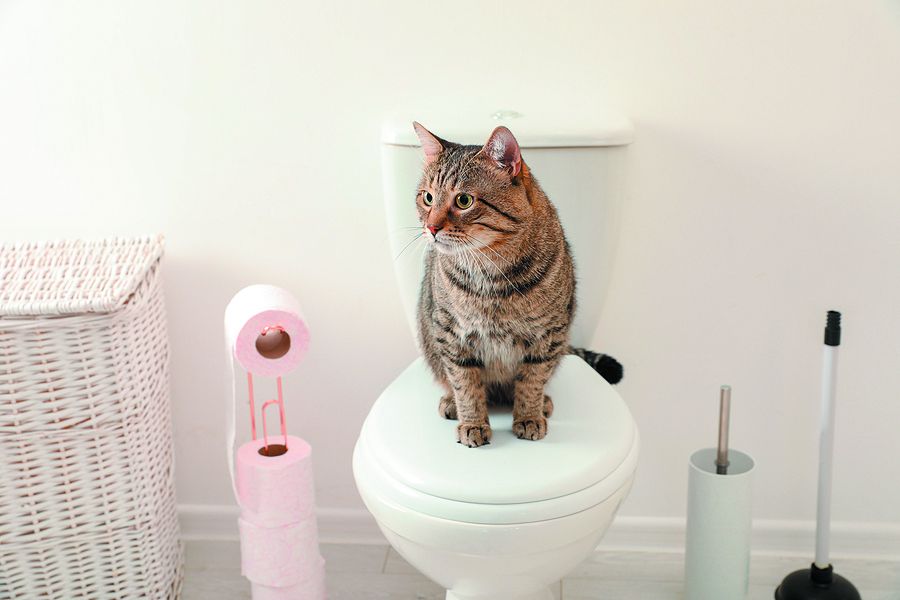Avoid Flush Cat Poop Down Your Toilet - Protect Your Pipes System
Call TodayThis post down below relating to How to Dispose of Cat Poop and Litter Without Plastic Bags is really informative. Read it yourself and see what you think of it.

Introduction
As cat owners, it's necessary to bear in mind exactly how we take care of our feline buddies' waste. While it may seem hassle-free to purge feline poop down the bathroom, this practice can have detrimental repercussions for both the environment and human health and wellness.
Ecological Impact
Purging feline poop presents harmful microorganisms and parasites into the supply of water, posturing a significant threat to marine environments. These pollutants can adversely affect aquatic life and compromise water quality.
Wellness Risks
In addition to ecological problems, flushing feline waste can also present health risks to humans. Pet cat feces might consist of Toxoplasma gondii, a parasite that can cause toxoplasmosis-- a potentially extreme ailment, especially for expecting women and individuals with weakened body immune systems.
Alternatives to Flushing
Luckily, there are much safer and more liable methods to get rid of cat poop. Take into consideration the complying with choices:
1. Scoop and Dispose in Trash
The most usual method of dealing with pet cat poop is to scoop it into an eco-friendly bag and throw it in the trash. Make certain to use a devoted clutter inside story and deal with the waste immediately.
2. Usage Biodegradable Litter
Opt for biodegradable cat trash made from products such as corn or wheat. These trashes are eco-friendly and can be safely disposed of in the garbage.
3. Hide in the Yard
If you have a lawn, consider burying cat waste in a designated area far from vegetable yards and water resources. Make certain to dig deep enough to avoid contamination of groundwater.
4. Set Up a Pet Waste Disposal System
Invest in a pet dog waste disposal system particularly made for cat waste. These systems utilize enzymes to break down the waste, reducing odor and environmental effect.
Verdict
Responsible animal possession extends beyond offering food and shelter-- it likewise includes appropriate waste monitoring. By avoiding flushing pet cat poop down the commode and going with different disposal approaches, we can decrease our ecological impact and safeguard human health.
Why Can’t I Flush Cat Poop?
It Spreads a Parasite
Cats are frequently infected with a parasite called toxoplasma gondii. The parasite causes an infection called toxoplasmosis. It is usually harmless to cats. The parasite only uses cat poop as a host for its eggs. Otherwise, the cat’s immune system usually keeps the infection at low enough levels to maintain its own health. But it does not stop the develop of eggs. These eggs are tiny and surprisingly tough. They may survive for a year before they begin to grow. But that’s the problem.
Our wastewater system is not designed to deal with toxoplasmosis eggs. Instead, most eggs will flush from your toilet into sewers and wastewater management plants. After the sewage is treated for many other harmful things in it, it is typically released into local rivers, lakes, or oceans. Here, the toxoplasmosis eggs can find new hosts, including starfish, crabs, otters, and many other wildlife. For many, this is a significant risk to their health. Toxoplasmosis can also end up infecting water sources that are important for agriculture, which means our deer, pigs, and sheep can get infected too.
Is There Risk to Humans?
There can be a risk to human life from flushing cat poop down the toilet. If you do so, the parasites from your cat’s poop can end up in shellfish, game animals, or livestock. If this meat is then served raw or undercooked, the people who eat it can get sick.
In fact, according to the CDC, 40 million people in the United States are infected with toxoplasma gondii. They get it from exposure to infected seafood, or from some kind of cat poop contamination, like drinking from a stream that is contaminated or touching anything that has come into contact with cat poop. That includes just cleaning a cat litter box.
Most people who get infected with these parasites will not develop any symptoms. However, for pregnant women or for those with compromised immune systems, the parasite can cause severe health problems.
How to Handle Cat Poop
The best way to handle cat poop is actually to clean the box more often. The eggs that the parasite sheds will not become active until one to five days after the cat poops. That means that if you clean daily, you’re much less likely to come into direct contact with infectious eggs.
That said, always dispose of cat poop in the garbage and not down the toilet. Wash your hands before and after you clean the litter box, and bring the bag of poop right outside to your garbage bins.
https://trenchlesssolutionsusa.com/why-cant-i-flush-cat-poop/

We had been introduced to that report about Can You Flush Cat Poo or Litter Down the Toilet? through a good friend on another web address. Do you know somebody who is fascinated with the subject? Be sure share it. I praise you for your time. Visit us again soon.
Call Today